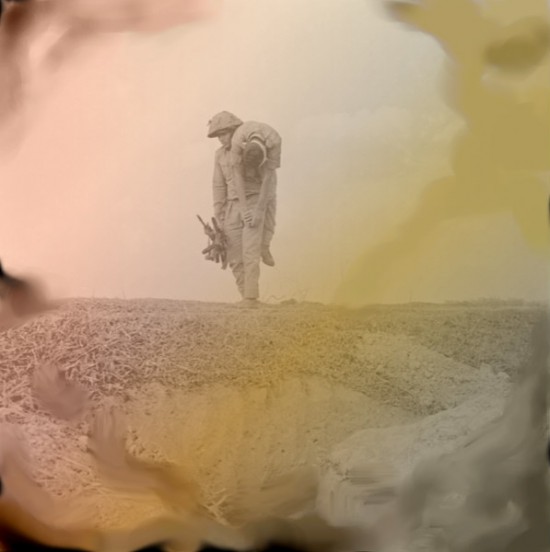Gray on Strategic Theory and COIN
Wednesday, June 27th, 2012I linked to this only in passing previously: here is eminent Clausewitzian scholar Colin S. Gray at NDU PRISM:
Concept Failure? COIN, Counterinsurgency, and Strategic Theory
….Argument
If this debate about COIN is to be reset along more productive lines than those typically pursued in the often heated and bad-tempered exchanges of recent times, it is necessary to place some reliance on the conceptual tools that strategic theory provides. Unsurprisingly, in its several forms that theory yields what Clausewitz specified: it sorts out what needs sorting. There is much that should be debated about COIN, but the controversy is not helpful for national security if the structure and functioning of the subject matter, suitably defined, are not grasped and gripped with intellectual discipline. To that end, what follows is a nine-part argument intended to make more sense of the not-so-great COIN debate triggered by the unmistakable evidence of confusion, frustration, and either failure or unsatisfactorily fragile success in Iraq and Afghanistan. This is neither policy nor strategy advocacy, but generically it is advocacy of policy (and its politics) and strategy, properly employed.
Formal education in strategy is not an adequate substitute for experience or talent and aptitude, but it should help.COIN debate would benefit if the debaters took a refresher course in the basics of strategy. Many fallacies and inadequate arguments about COIN in Afghanistan, for instance, are avoidable if their proponents were willing to seek and were able to receive help from theory. Harold Winton offers useful guidance when he identifies five functions for competent theory: such theory “defines, categorizes, explains, connects, and anticipates.”10 About what does theory perform those functions? The answer, which for strategy is the equivalent of E = mc2, is ends, ways, means, and (with caveats) assumptions. If a strategist’s narrative performs well on this formula, he has indeed cracked the code that enables—though it cannot guarantee—strategic success. The strategist needs to understand his subject, which is not COIN or counterterrorism; it is strategy for his particular challenge in COIN or counterterrorism. It is hard to find compensation for a lack of case-specific local knowledge, but it is even harder, and can be impossible, to compensate for weakness in understanding of strategy.
There is a classical canon of authors worth reading for their contributions, both intended and not, to the general theory of strategy. This theorist has reshaped and assembled the theory in the form of dicta (formal statements that are not quite principles and definitely not laws).11 Rather than test readers’ patience with a recital of my dicta, here I capture much of their meanings and implications by offering a list of “strategists’ questions,” some of which, with some amendments, I have borrowed with gratitude from the late Philip Crowl, followed by my own redrafting of the now long-traditional “Principles of War” as a set of Principles of War that I believe more suitably serves the declared purpose. First, the following are the strategists’ questions:
- What is it all about? What are the political stakes, and how much do they matter to us?
- So what? What will be the strategic effect of the sundry characters of behavior that we choose to conduct?
- Is the strategy selected tailored well enough to meet our political objectives?
- What are the probable limits of our (military) power as a basket of complementary agencies to influence and endeavor to control the enemy’s will?
- How could the enemy strive to thwart us?
- What are our alternative courses of action/inaction? What are their prospective costs
and benefits?- How robust is our home front?
- Does the strategy we prefer today draw prudently and honestly upon the strategic education that history can provide?
- What have we overlooked?
Ok, so far but take a look at this claim:
….It is not sensible to categorize wars according to the believed predominant combat style of one of the belligerents.Guerrilla-style warfare is potentially universal and, on the historical evidence, for excellent reasons has been a favored military method of the weaker combatant eternally. There are no such historical phenomena as guerrilla wars. Rather, therehave been countless wars wherein guerrilla tactics have been employed, sometimes by both sides. To define a war according to a tactical style is about as foolish as definition according to weaponry. For example, it is not conducive of understanding to conceive of tank warfare when the subject of interest is warfare with tanks and so forth, typically, if not quite always, in the context of combined arms. It is important conceptually not to allow the muscle to dominate the brain.
So there is no qualitative difference between a nuclear war (WWIII) and a war in which some nuclear weapons were used (WWII)? What?
No. Gray is correct that many wars partake of a blend of tactical fighting styles or that most wars are better defined (or at least should be in terms of causation) by their political character. That said, a specific fighting style sometimes is a definitive descriptive characteristic of a war, particularly if a dominant tactical style explains one side’s consistent comparative advantage (ex. the Macedonian phalanx vs. the Persians) in battle and some of the resultant choices which were forced upon the adversary.





